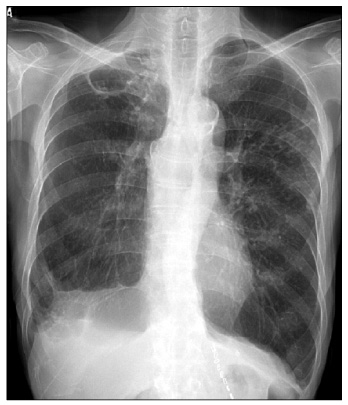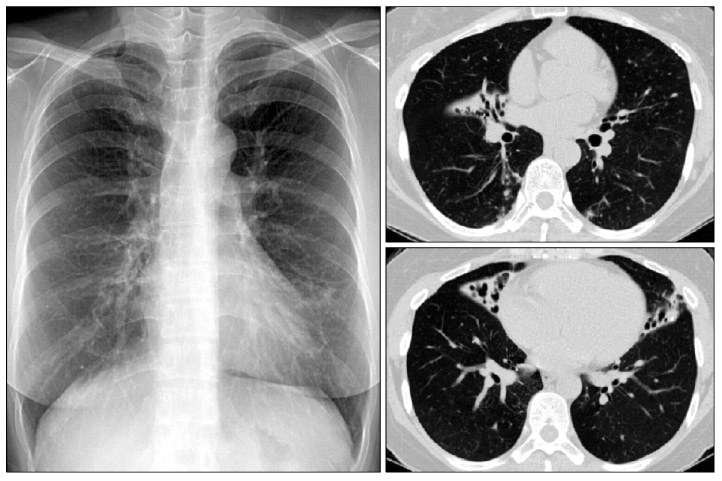Tuberc Respir Dis.
2009 Nov;67(5):395-401.
Respiratory Review of 2009: Nontuberculous Mycobacterium
- Affiliations
-
- 1Department of Internal Medicine, Dankook University College of Medicine, Cheonan, Korea. jspark@dankook.ac.kr
Abstract
- As the prevalence of tuberculosis declines, the proportion of nontuberculous mycobacterial (NTM) lung disease is increasing in Korea. The combined use of liquid and solid media increases the sensitivity of mycobacterial culture and shortens culture time. Because NTMs are ubiquitous in the environment, NTM lung disease requires strict diagnostic criteria to prevent over-diagnosis of NTM lung disease. Mycobacterium avium complex is the most common pathogen of NTM lung disease in Korea and present in two forms: upper lobe cavitary and nodular bronchiectatic form. Decision of treatment of NTM lung disease depends on the infecting species and overall condition of the patient. Because medical therapy requires the use of multiple drugs over 18 to 24 months, surgery for localized disease may be useful for those species refractory to medical therapy.
Keyword
MeSH Terms
Figure
Reference
-
1. Griffith DE, Aksamit T, Brown-Elliott BA, Catanzaro A, Daley C, Gordin F, et al. An official ATS/IDSA statement: diagnosis, treatment, and prevention of nontuberculous mycobacterial diseases. Am J Respir Crit Care Med. 2007. 175:368–416.2. Lee JY, Choi HJ, Lee H, Joung EY, Huh JW, Oh YM, et al. Recovery rate and characteristics of nontuberculous mycobacterial isolates in a university hospital in Korea. Tuberc Respir Dis. 2005. 58:385–391.3. Ryoo SW, Shin S, Shim MS, Park YS, Lew WJ, Park SN, et al. Spread of nontuberculous mycobacteria from 1993 to 2006 in Koreans. J Clin Lab Anal. 2008. 22:416–420.4. Bae E, Im JH, Kim SW, Yoon NS, Sung H, Kim MN, et al. Evaluation of combination of BACTEC Mycobacteria growth indicator tube 960 system and Ogawa media for mycobacterial culture. Korean J Lab Med. 2008. 28:299–306.5. Diagnosis and treatment of disease caused by nontuberculous mycobacteria. This official statement of the American Thoracic Society was approved by the Board of Directors, March 1997. Medical Section of the American Lung Association. Am J Respir Crit Care Med. 1997. 156:S1–S25.6. Koh WJ, Kwon OJ, Jeon K, Kim TS, Lee KS, Park YK, et al. Clinical significance of nontuberculous mycobacteria isolated from respiratory specimens in Korea. Chest. 2006. 129:341–348.7. Subcommittee of the Joint Tuberculosis Committee of the British Thoracic Society. Management of opportunist mycobacterial infections: Joint Tuberculosis Committee Guidelines 1999. Thorax. 2000. 55:210–218.8. Koh WJ, Kwon OJ. Diagnosis and treatment of nontuberculous mycobacterial lung disease. Korean J Med. 2008. 74:120–131.9. Koh WJ, Kim YH, Kwon OJ, Choi YS, Kim K, Shim YM, et al. Surgical treatment of pulmonary diseases due to nontuberculous mycobacteria. J Korean Med Sci. 2008. 23:397–401.
- Full Text Links
- Actions
-
Cited
- CITED
-
- Close
- Share
- Similar articles
-
- Recent Advances in Tuberculosis and Nontuberculous Mycobacteria Lung Disease
- A Fatal Case of Acute Respiratory Failure Caused by Mycobacterium massiliense
- Osteomyelitis due to Nontuberculous Mycobacterium in Immunocompetent Children: Report of Two Cases
- Delayed Nontuberculous Mycobacterium Manifestation 1 Year after a Dog Bite on the Hand
- A Case of Mycobacterium massiliense Infection Presenting as Pneumonia Resistant to Antibiotics in an Immunocompetent Host



